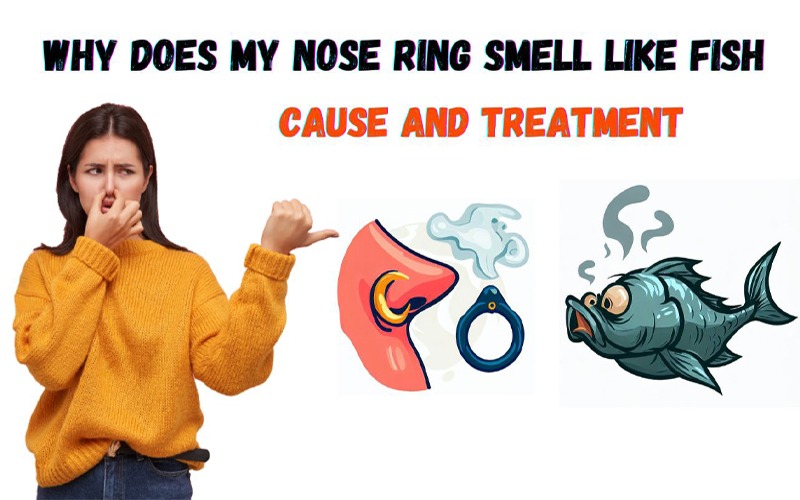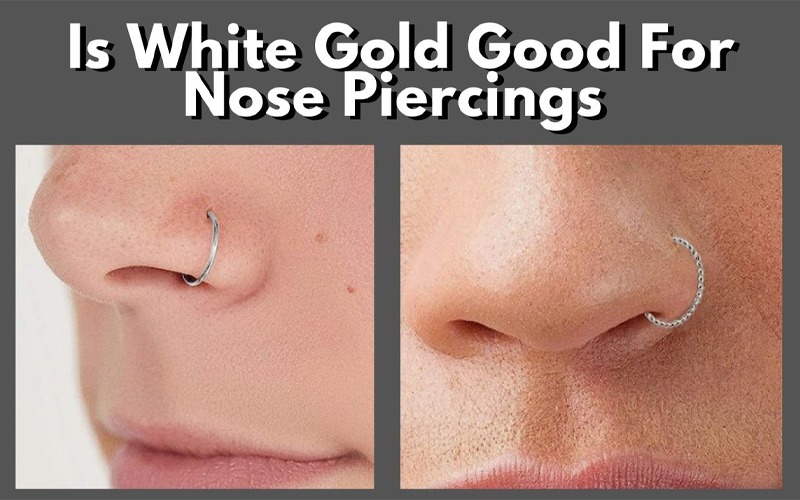Understanding the healing process of a nose piercing
Nose piercings have become a popular form of self-expression and body modification. However, it is important to understand that getting a nose piercing requires proper care and time for healing. The healing process can vary from person to person, but typically takes around 6 to 8 weeks. During this time, the body works to close the wound created by the piercing and form new tissue around the jewelry.
Common signs of a healed nose piercing
Knowing when a nose piercing has fully healed is crucial to avoid any complications or infections. Here are some common signs that indicate a healed nose piercing:
– Absence of pain or discomfort: Once a nose piercing is healed, there should be no pain or discomfort when touching or moving the jewelry.- No redness or swelling: Redness and swelling are common during the initial stages of healing, but they should subside once the piercing is fully healed.- Easy movement of the jewelry: A healed nose piercing allows the jewelry to move freely without any resistance or discomfort.- Crust or scab formation: In the healing process, it is normal to have slight crust or scab formation around the piercing. However, once the piercing is fully healed, these should no longer be present.- No discharge or pus: A healed nose piercing should not produce any discharge or pus. If there is any sign of infection, such as yellow or greenish discharge, it is important to seek medical attention.
It is important to remember that everyone’s healing process may differ slightly, and some individuals may require more time for their nose piercing to fully heal. Following proper aftercare instructions given by a professional piercer can greatly contribute to a successful healing process.

Initial Healing Stage
Nose piercing aftercare instructions
During the initial healing stage of a nose piercing, it is crucial to follow proper aftercare instructions to promote healing and minimize the risk of infection. Here are some important aftercare steps to follow:
- Wash your hands thoroughly before touching the piercing.
- Clean the piercing with a saline solution or a mild, fragrance-free soap recommended by your piercer.
- Avoid touching the piercing with dirty hands or unnecessary contact.
- Avoid swimming in pools, hot tubs, or bodies of water during the healing process.
- Avoid using any alcohol-based products or harsh chemicals on the piercing.
- Avoid changing or removing the jewelry until the piercing is fully healed.
- Try to sleep on your back or with a travel pillow to avoid putting pressure on the piercing.
- Avoid excessive movement or rotation of the jewelry.
- Avoid applying makeup or beauty products directly on the piercing until it is fully healed.
Signs of proper healing during the initial stage
It is important to monitor the healing progress of a nose piercing during the initial stage. Here are some signs that indicate proper healing:
- Minimal redness and swelling around the piercing
- No excessive pain or discomfort
- Clear or slightly yellow fluid secretions, which are normal during the healing process
- No signs of infection such as excessive redness, pus, or foul odor
- The jewelry moves freely without any resistance or pain
If you experience any concerning symptoms such as increasing pain, excessive swelling, or signs of infection, it is important to seek medical attention. Remember, everyone’s healing process can vary, so it is crucial to be patient and give your nose piercing the proper time to heal.
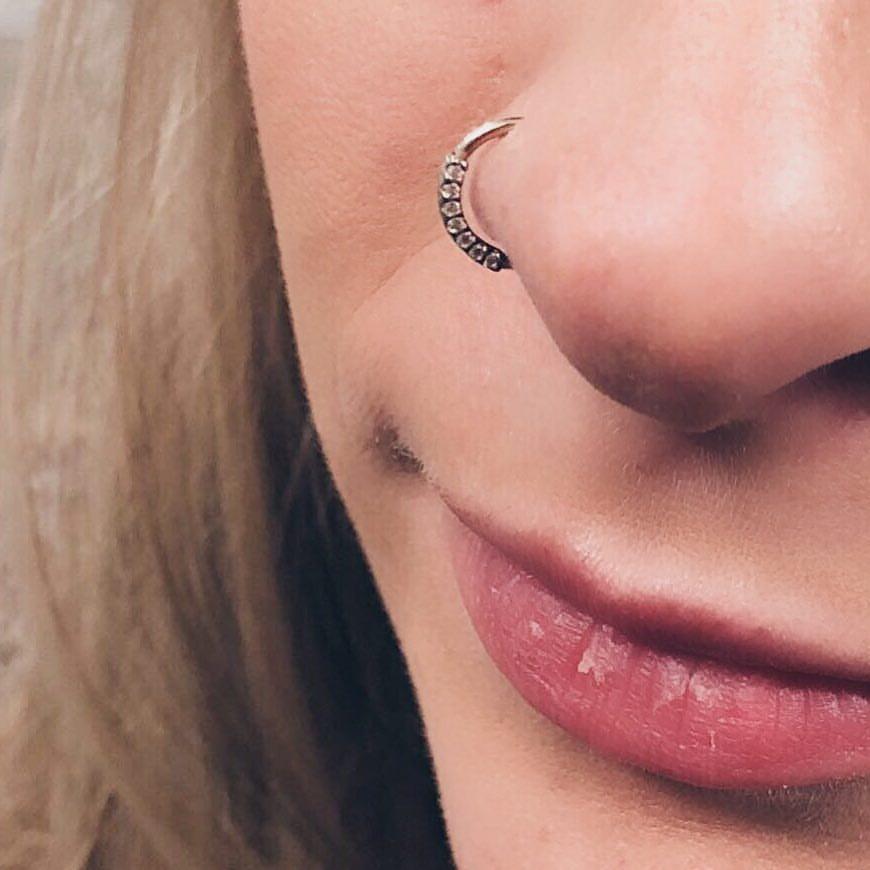
Infection and Complications
Identifying signs of infection
It is important to be aware of the signs of infection during the healing process of a nose piercing. Here are some indicators of a possible infection:
- Excessive redness, swelling, and warmth around the piercing
- Pain or tenderness that gets worse instead of improving
- Pus or thick yellow-green discharge
- Red streaks coming from the piercing
- Foul odor coming from the piercing
If you notice any of these signs, it is essential to seek medical attention as soon as possible. Infections can be serious and may require antibiotics to resolve.
Potential complications and how to address them
Although rare, nose piercing complications can occur. It is crucial to be aware of these potential issues and know how to address them:
| Potential Complications | How to Address |
|---|---|
| Migration or rejection of the jewelry | If you notice the jewelry moving or appearing to move out of the piercing, consult with your piercer. They may need to adjust the jewelry or consider a different type of jewelry. |
| Keloids or hypertrophic scars | If you develop raised, thickened scars around the piercing, consult with a dermatologist or a professional piercer. They may recommend treatment options such as steroid injections. |
| Cartilage damage | If you experience ongoing pain, intense swelling, or deformities in the shape of your nose, consult with a medical professional. They may need to assess the damage and provide appropriate treatment. |
Remember to always prioritize your health and seek professional advice if you have any concerns or complications with your nose piercing. It is crucial to properly care for your piercing and monitor its healing progress to avoid infections and potential complications.

Healing Timeline
Different Stages of Nose Piercing Healing
The healing process of a nose piercing can be divided into several stages, each with its own characteristics:
- Initial Healing Stage (1-2 weeks): During this stage, the piercing is fresh and may be tender, swollen, and red. It is important to follow proper aftercare guidelines to minimize the risk of infection.
- Middle Healing Stage (2-4 weeks): In this stage, the swelling and redness should start to subside, and the pain and tenderness should diminish. The formation of a thin crust around the piercing is normal.
- Advanced Healing Stage (4-6 weeks): By this stage, the piercing should appear less inflamed, and the crust should gradually decrease. However, it is still important to be cautious and continue proper aftercare to prevent complications.
- Final Healing Stage (6-12 months): This is the longest stage of the healing process. While the visible signs of healing may have subsided, it is crucial to continue practicing good hygiene and avoiding irritants to ensure complete healing.
Estimated Time for Complete Healing
The complete healing time for a nose piercing can vary from person to person. On average, it can take anywhere from 6 to 12 months. Factors such as individual healing abilities, proper aftercare, and the type of jewelry used can influence the healing process.
It is important to remember that even after the initial healing period, it is still essential to take care of your nose piercing and monitor it for any signs of infection or complications. If you have any concerns or questions during the healing process, consult with a professional piercer or healthcare provider for guidance.
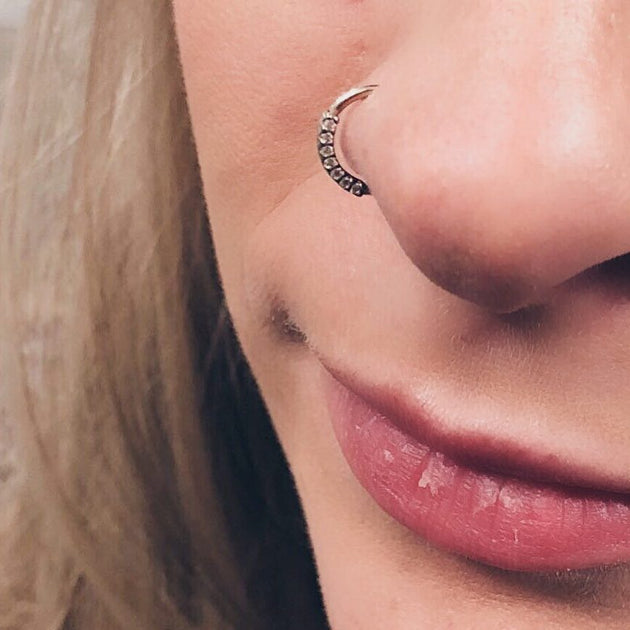
Redness and Swelling
Normal redness and swelling during the healing process
During the healing process of a nose piercing, it is common to experience some degree of redness and swelling. This is a natural response of the body as it works to heal the piercing. The initial healing stage, which lasts 1-2 weeks, is characterized by redness, tenderness, and swelling around the piercing site. This is normal and should gradually subside as the healing progresses.
When to be concerned about excessive redness or swelling
While some redness and swelling are expected during the healing process, it is important to be aware of signs that may indicate a problem. If the redness and swelling become increasingly severe, or if they are accompanied by other symptoms such as pus, excessive pain, or a fever, it could be a sign of infection or an allergic reaction. In these cases, it is important to seek medical attention.
Monitoring the progression of redness and swelling is essential during the healing process. If you notice that the redness and swelling are not improving or are getting worse after the initial healing stage, it is advisable to consult with a professional piercer or healthcare provider for further evaluation.
Remember to always follow proper aftercare guidelines and maintain good hygiene throughout the healing process. This includes cleaning the piercing with saline solution or a mild soap, avoiding touching the piercing with dirty hands, and avoiding irritants such as harsh chemicals or excessive friction.
By being attentive to the healing process and taking prompt action if any concerning symptoms arise, you can ensure a smooth and successful healing journey for your nose piercing.
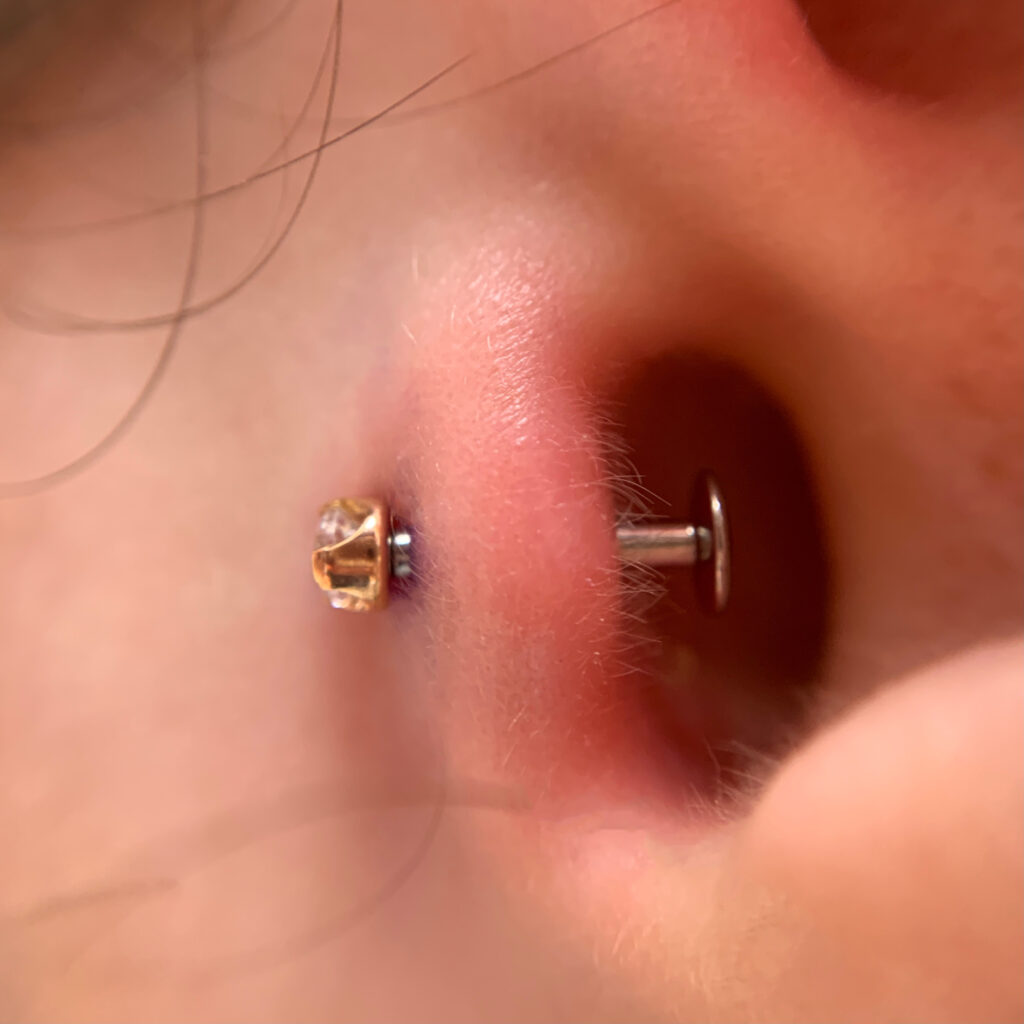
Discharge and Crustiness
Normal discharge and crustiness during healing
During the healing process of a nose piercing, it is normal to experience some degree of discharge and crustiness. This is a natural part of the body’s healing response as it works to remove any bacteria or foreign substances from the piercing site. The discharge may appear as a clear or slightly yellowish fluid that dries and forms crusts around the jewelry.
Signs of abnormal discharge or crustiness
While some discharge and crustiness are expected during the healing process, it is important to be aware of signs that may indicate an issue. If the discharge becomes thick, green, or foul-smelling, or if there is an excessive amount of crustiness that is not easily removed, it could be a sign of infection. Other symptoms to watch out for include redness, increased pain, and swelling around the piercing site.
If you notice these abnormal signs, it is essential to seek medical attention as soon as possible. Infections can be serious and may require antibiotics or other treatments to prevent complications.
Regularly cleaning the piercing with saline solution or a mild soap can help prevent excessive discharge and crustiness. Gently cleaning around the jewelry and removing any dried crusts can promote healing and prevent bacteria from accumulating.
Remember to always wash your hands thoroughly before touching the piercing or performing any cleaning routine. This helps prevent the introduction of unwanted bacteria and reduces the risk of infection.
By closely monitoring the discharge and crustiness throughout the healing process and taking prompt action if any abnormal symptoms appear, you can ensure the proper healing of your nose piercing.
Sensation and Comfort
Normal sensations during healing
During the healing process of a nose piercing, it is common to experience various sensations. These sensations may include throbbing, itching, or a mild burning sensation around the piercing site. These symptoms are normal and often indicate that the body is healing and adjusting to the presence of the piercing.
It is also normal to feel some tenderness or sensitivity around the piercing, especially in the early stages of healing. This tenderness may make it slightly uncomfortable to touch or move the jewelry. However, as the healing progresses, these sensations should gradually decrease.
How to address discomfort or pain
If you are experiencing significant discomfort or pain that is interfering with your daily activities or if the pain is getting worse instead of improving, it is important to seek medical attention. It could be a sign of an infection or other complications that require professional assessment and treatment.
In the meantime, there are a few things you can do to help alleviate mild discomfort or pain during the healing process:
- Apply a cold compress or ice pack wrapped in a clean cloth to the piercing site for a few minutes. This can help reduce swelling and provide temporary relief.
- Avoid sleeping on the side of the piercing. Sleeping on the opposite side or using a travel pillow can help reduce pressure and discomfort.
- Avoid touching or twisting the jewelry unnecessarily. Excessive movement or friction can prolong the healing process and increase discomfort.
- Take over-the-counter pain relievers, such as ibuprofen or acetaminophen, as directed for temporary pain relief. However, consult your healthcare provider before taking any medication to ensure it is suitable for you.
Remember to follow the aftercare instructions provided by your piercer and avoid using any harsh cleaning products or excessive force when cleaning the piercing. If you have any concerns or questions about the healing process or discomfort you are experiencing, don’t hesitate to reach out to your piercer or healthcare provider for guidance.
Changing the Jewelry
When and how to change the initial jewelry
At some point during the healing process, you may decide to change your initial jewelry to a different style or material. However, it’s essential to wait until your piercing is fully healed before attempting to change the jewelry. This typically takes around 6-8 weeks for a nose piercing.
Changing the jewelry too early can disrupt the healing process and increase the risk of complications, such as infection or irritation. Therefore, it is crucial to be patient and allow your body enough time to heal before attempting any jewelry changes.
When you are ready to change your nose piercing jewelry, it’s essential to follow proper hygiene practices to minimize the risk of infection. Here are some steps to help you change your jewelry safely:
- Wash your hands thoroughly with soap and warm water.
- Clean the new jewelry with a saline solution or an appropriate piercing cleanser.
- Gently remove the current jewelry by unscrewing or sliding it out of the piercing hole.
- Immediately insert the new jewelry into the piercing hole.
- Ensure the jewelry is securely in place without being too tight or causing discomfort.
- Follow the aftercare instructions provided by your piercer for the new jewelry.
Signs that your piercing is ready for a jewelry change
It’s important to note that not all piercings heal at the same rate, and everybody’s healing process is unique. However, there are some common signs that indicate your nose piercing may be ready for a jewelry change. These signs include:
- No pain or discomfort around the piercing site.
- No visible signs of redness, swelling, or discharge.
- The piercing hole feels stable and secure.
- There is no tenderness or sensitivity when touching or moving the jewelry.
If you experience any pain, swelling, or discharge when attempting to change the jewelry, it’s recommended to wait a little longer before trying again. It’s always best to err on the side of caution and give your piercing additional time to heal before making any changes.
Remember, if you have any concerns or questions about changing your nose piercing jewelry, consult with your piercer or healthcare provider for professional advice and guidance.
Conclusion
Final thoughts on determining if your nose piercing is healed
When it comes to changing your nose piercing jewelry, it’s important to exercise patience and follow proper hygiene practices. Waiting until your piercing is fully healed, which typically takes around 6-8 weeks, is crucial to prevent complications and ensure a successful jewelry change.
If you notice any signs of pain, redness, swelling, or discharge, it’s important to give your piercing more time to heal before attempting any jewelry changes. Everyone’s healing process is unique, so it’s essential to listen to your body and not rush the process.
When the time comes to change your jewelry, make sure to wash your hands thoroughly and clean the new jewelry with a saline solution or appropriate cleanser. Carefully remove the current jewelry and immediately insert the new one, ensuring that it is securely in place without causing any discomfort.
Remember to follow the aftercare instructions provided by your piercer for the new jewelry to promote proper healing and minimize the risk of infection. If you have any concerns or questions about changing your nose piercing jewelry, it’s always best to consult with your piercer or healthcare provider for professional advice and guidance.
By taking these precautions and being aware of the signs that your piercing is ready for a jewelry change, you can ensure a smooth and successful transition to new nose piercing jewelry.




